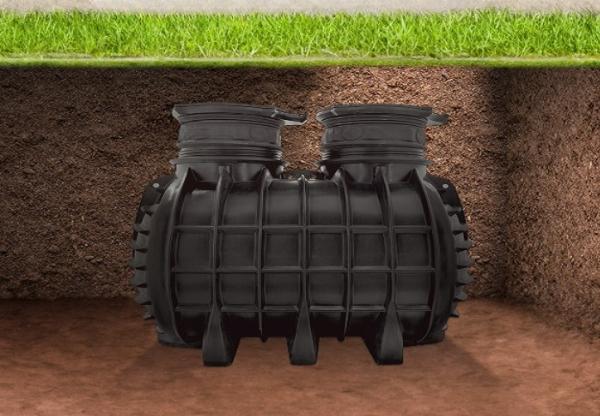Top Considerations for Choosing an Underground Water Tank

Strong 8k brings an ultra-HD IPTV experience to your living room and your pocket.
Water is an essential resource for every household and industry. Storing water efficiently ensures its availability even during times of scarcity. One of the most practical solutions for large-scale water storage is the underground water tank. These tanks are concealed beneath the ground, making them ideal for space-saving, discreet, and long-term water storage. However, selecting the right tank requires thoughtful consideration to ensure that it meets your needs in terms of durability, capacity, and maintenance. Here, we’ll explore the top factors to keep in mind when choosing an underground water tank, focusing on the use of plastic water tanks for their versatility and efficiency.
1. Understanding Your Water Storage Needs
The first and most crucial step in choosing the right underground water tank is understanding your water storage requirements. The size and capacity of the tank should be aligned with how much water you plan to store. This decision is influenced by various factors, including the number of people in your household, the amount of water you consume daily, and the purpose of water storage (domestic use, gardening, or industrial use).
If your goal is to store rainwater for irrigation or household consumption, you’ll need a tank that can hold a substantial volume. Estimating your water usage helps you avoid installing an undersized or oversized tank, both of which can lead to inefficiencies. Plastic water tanks come in various sizes, making them adaptable to different water usage needs, from small household installations to larger industrial setups.
2. Space and Location Considerations
The location where you intend to install the underground water tank is critical. Unlike above-ground tanks, underground tanks are buried, so selecting a suitable spot is essential. The area should be free from large tree roots, rocks, or other underground obstructions that might damage the tank over time. Moreover, the location should allow for easy access for maintenance and cleaning.
The soil type at the installation site also plays a role. Some soils, such as clay, can expand and contract with moisture changes, which can exert pressure on the tank. High-quality plastic water tanks are designed to withstand such external pressures, offering flexibility in varying soil conditions. Additionally, you’ll need to ensure that the installation site has proper drainage to prevent water from accumulating around the tank, which could lead to damage.
3. Capacity and Size of the Tank
Determining the appropriate capacity for your underground water tank is one of the most important decisions you’ll make. Tank sizes can range from a few hundred litres to several thousand, depending on your water consumption and storage needs. Before making a purchase, it’s essential to calculate how much water you’ll need to store, especially during dry seasons or times of water scarcity.
When estimating your water requirements, consider not just the number of people in your household but also your daily activities, such as gardening, washing, or industrial processes. For most households, a 1,000 to 5,000-liter tank is sufficient, but larger properties or industrial settings may require a tank with a much higher capacity. Since plastic water tanks are available in various sizes, they offer the flexibility to meet different capacity needs.
4. Durability and Strength
Durability is a key consideration when choosing an underground water tank. Since these tanks are buried, they must withstand external pressures from the surrounding soil as well as potential groundwater. The strength of the tank’s walls is critical to ensuring that it does not crack or collapse over time, especially in areas with heavy soil movement.
High-quality plastic water tanks are designed to be both durable and flexible, which allows them to resist external pressures without cracking. Additionally, many plastic tanks are built with multiple layers, providing added strength and resistance to damage from environmental factors. Be sure to choose a tank that is specifically designed for underground use, as these are constructed to handle the unique demands of being buried.
5. Installation Process
Installing an underground water tank requires careful planning and execution. The process involves excavating a large pit, ensuring the ground is level, and securely placing the tank in the ground. While plastic water tanks are lightweight and easier to handle compared to other materials, proper installation is still crucial to ensure the tank’s longevity.
During the installation process, ensure that the tank is placed on a stable, level surface, and is backfilled properly to avoid shifting or damage. Plastic tanks can be more forgiving when it comes to soil pressure due to their flexibility, but improper installation can lead to problems such as tank collapse or leakage. It is recommended to work with professionals who have experience installing underground tanks to ensure everything is done correctly.
6. Ease of Maintenance and Cleaning
Over time, water tanks can accumulate dirt, algae, and other debris, especially if they are used to store rainwater or untreated water. Therefore, it’s important to choose a tank that is easy to maintain and clean. Regular cleaning and inspection ensure that the water remains safe for use and that the tank itself stays in good condition.
One of the advantages of plastic water tanks is that they typically have smooth interior surfaces, making them easier to clean than tanks made from other materials. Additionally, many plastic tanks come with convenient access points, such as manholes or removable lids, which make cleaning and maintenance tasks simpler. When choosing your underground tank, make sure it includes these features for hassle-free upkeep.
7. Longevity and UV Resistance
Even though an underground water tank is buried, there may still be parts of the tank, such as the access hatch or inlet, that are exposed to sunlight. Over time, prolonged exposure to UV rays can degrade some plastics, leading to cracking or weakening. To avoid this issue, it’s important to choose a plastic tank that is made from UV-stabilized materials.
UV-stabilized plastic water tanks are specially treated to resist damage from sunlight, ensuring that they remain durable even when partially exposed. This feature helps prolong the life of the tank and ensures it remains in good condition for many years.
Conclusion
Choosing the right underground water tank requires careful thought and consideration of factors such as capacity, location, durability, and maintenance. A well-chosen tank can provide you with reliable water storage for years to come. Plastic water tanks, in particular, offer a versatile, cost-effective, and durable solution that meets a variety of storage needs. By keeping these considerations in mind, you’ll be well-equipped to choose an underground tank that perfectly suits your water storage requirements, ensuring that you always have access to clean, safe water when you need it most.
Note: IndiBlogHub features both user-submitted and editorial content. We do not verify third-party contributions. Read our Disclaimer and Privacy Policyfor details.



